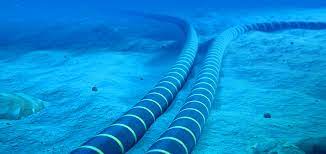You may think troubleshooting your Wi-Fi router may be hard. Wait till you find out what keeps your internet connection going. Your router may time-out every few hours—leading you into fits of anger. However, it can’t compare with the infrastructure that acts as the backbone of the global internet system. There are enough humongous submarine internet cable network to circumnavigate the Earth 30 times. That is close to 406 cables—without any extension cords.
The internet has now been around in households for the past three decades. We take going online for granted, without realizing the colossal infrastructure that comes into play to make it possible. For example, to open a search page on Google. We feel our Wi-Fi router does all this work. However, there is an entire network of cables that are operating undersea to make simple online tasks possible—like reading this article. Undersea cables have been around for more than the last 150 years, so the idea of submarine internet cables is not all that new.
The electric telegraph could communicate messages written in Morse code during the industrial revolution era in the 1850s.
After you opt to upload a GIF, post a comment on Facebook, watch a YouTube video, or do just about any online activity, the information from your device is sent to a cell phone tower or router with the help of cables or radio waves. Then fiber optic cables receive those signals and send them off to an internet exchange. Data gets sorted and organized at an internet exchange. After that, the data travels through a local network and connects to another close network. When data needs to travel across global data centers, it undertakes an oceanic voyage where the submarine cable network acts as a vessel to transport data across the world. Submarine cables terminate at their final stop—landing station. From here, the data then travels across land-based cable networks till it reaches the server of the desired website. And then this process goes on.
Last year, one of these cable networks got disrupted—underlining how this complex infrastructure can function. The cable in question was the 14th Transatlantic Transmission System (TAT 14). It was laid out in 1957 in a place called West Jutland in Denmark. The other end of the cable is in New Jersey. This cable system is connected between Denmark and America through the United Kingdom. That is quite a long cable for transmitting data. It took about 80 milliseconds on average for data signals to be transported across this cable from Denmark to the US.
So how does this cable network survive underwater, undisturbed by sea animals, fishing boats, and other human activity? The simple answer is that it does not. Numerous incidents have been reported where submarine cables have been snapped up by sharks biting on them with their sharp teeth.
To prevent disruptions to the global internet, submarine cables are ruggedized depending on how deep they have been installed beneath the ocean. For example, if they are laid out over 5 km from the surface of the sea, then they don’t even need to be armored. The lesser the depth of the ocean, the more protection these cables will require. The TAT 14 got damaged when a ship dropped its anchor directly on it, resulting in internet outages across the world. This is a rare occurrence, but things like these do happen.
Summing Up
The internet is a marvel of modern engineering. It is a complex network of cables spanning sea-beds across the world’s oceans. Since we are so dependent on the internet to perform our daily functions, we must keep these undersea cables safe.
While we are talking about undersea internet cables, it is worth mentioning how important it is to choose the right Internet Service Provider (ISP). Make the right choice by signing up for Kinetic Windstream internet. Select the package that best suits your needs to enjoy surfing the net with the kind of dependable speed you desire.
Apart from that if you want to know about VPS Hosting then visit our Tech category.
How deep-sea internet cables connect the world?
Deep sea internet cables, also known as submarine communication cables, are the unsung heroes of our interconnected world. They allow us to connect with people and information from all corners of the globe, enabling us to communicate, share ideas, and conduct business on a scale never before possible. These cables span vast distances beneath the world’s oceans, connecting continents and countries in a complex network that is constantly expanding.
The process of connecting the world through deep sea internet cables involves laying thousands of kilometers of cable on the ocean floor. This is done by specialized ships that carefully navigate the depths of the ocean, ensuring that the cable is laid in the most efficient and effective way possible. Once the cable is in place, it is connected to landing stations on shore, which then connect to the wider internet infrastructure.
Despite the incredible engineering feats required to lay these cables, they are still vulnerable to damage from natural disasters, such as earthquakes or storms, as well as human activities like fishing or drilling. Nonetheless, deep sea internet cables remain a critical part of our global infrastructure, and will continue to play a vital role in connecting the world in the years to come.
